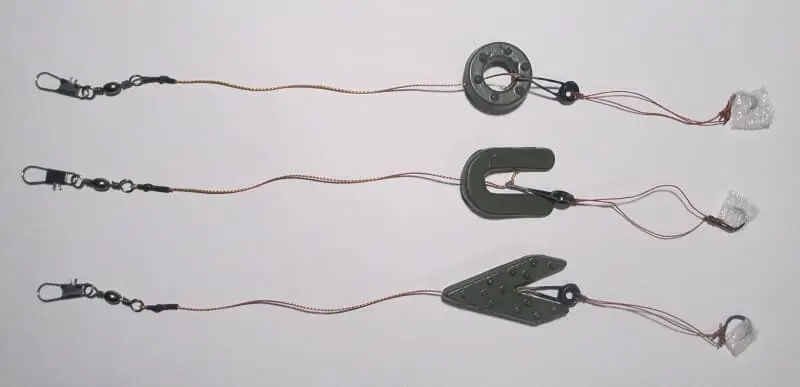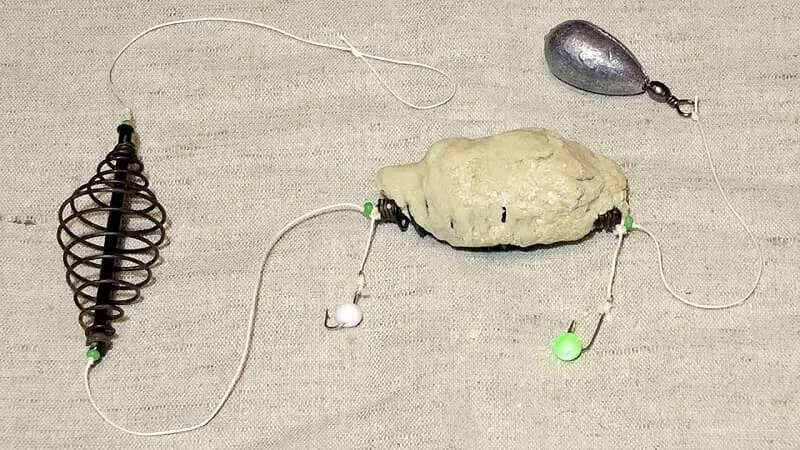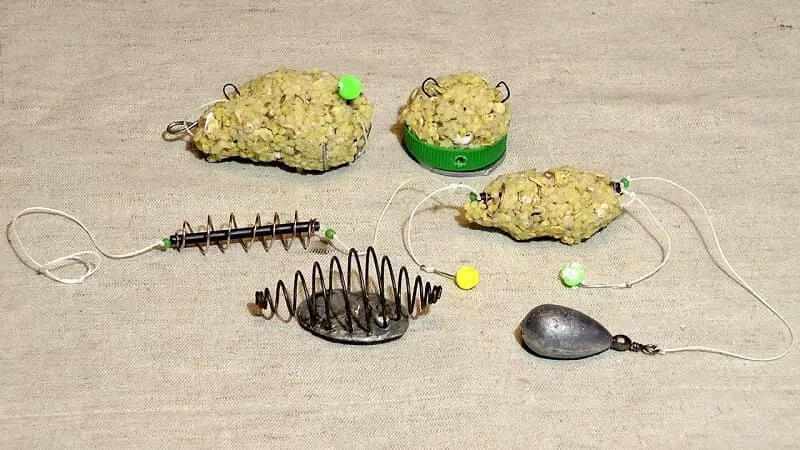Contents
Fishing for carp is common in the southern regions of the CIS, in the Far East, where this fish is found in abundance. Carp (aka wild carp) is a rather cunning fish, which, perhaps, resists more than others when playing and is capable of delivering a lot of exciting experiences to the angler.
Carp: behavior in nature
Carp is a bottom non-predatory fish. It eats aquatic insects, bugs, and is sometimes tempted by fry. Aquatic plants can also serve as its food. With pleasure, he eats high-calorie roots rich in fiber and carbohydrates. Strictly speaking, this fish is non-predatory only from the point of view of anglers, who relatively rarely have carp bites on live bait and fry. From the point of view of biologists, this fish is omnivorous. It can eat almost all day, but is most active only in the evening and morning hours.
The food varies depending on the season. In spring, carp eats young shoots of aquatic plants and eggs of fish and frogs that spawn before it. Gradually, by the beginning of summer, he begins to eat aquatic insects, leeches, worms and polyps. Closer to autumn, completely departs from plant foods. In the cold season, carp is inactive and for the most part stands at the bottom of deep wintering pits, and its body is covered with a thick mucous layer, which reliably protects the body from infections during hibernation.
There are several forms of carp that have been domesticated by man. This is a mirror carp, which has almost no scales, as well as koi carp – an oriental variety of carp with a bizarre bright color. It is of great economic importance. Carp, when bred in pond farms, can bring a good income, but only with a fairly large scale of production. For smaller farms, fish such as crucian carp can be recommended.
Spawning of carp occurs at a water temperature of about 20 degrees, in the natural environment this is May. Fish come in flocks to spawning grounds and stop at a depth of about 1.5-2 meters, often these are thickets covered with jugs and lotus, of which there are many in the lower reaches of the Volga, in the Astrakhan region, where carp are quite numerous. Such places are also found in other rivers. Spawning occurs at shallow depths in groups of one female and several males. Usually, the fish spawns in floodplain sod areas with a hard bottom, or spawns on aquatic plants in places with a depth of no more than 60-70 cm.

Two types of carp can be distinguished according to the type of behavior – residential and semi-anadromous carp. Residential is found everywhere in places with a weak current or without it in the Volga, Urals, Don, Kuban, Terek, Dnieper and other rivers, in many lakes, ponds. It usually lives in quiet bays rich in food and aquatic plants. It spawns near its permanent habitat.
Semi-anadromous lives in fresh and brackish waters of the seas – Azov, Black, Caspian, Aral, East China, Japan and a number of others. It never strays far from the mouths of the rivers flowing into it, and prefers overgrown reed estuaries. For spawning, the semi-anadromous carp goes to the rivers in large groups. In Japan and China, there is a cult of this fish in its semi-anadromous form. It is believed that the spawning carp is the personification of male power.
Fishing practice when catching carp
All gear on carp have one feature. When catching it, the nozzle is not placed on the hook, but is carried with it, and the hook is placed on a separate flexible leash. This is done because the carp swallows the bait, it goes further into the stomach, and the hook, like a foreign body, tries to throw it over the gills. This way he sits securely on the hook. Catching it in any other way is not very effective. Firstly, he feels the hook in the bait well and will spit it out faster. And secondly, most often when catching it, relatively hard nozzles, cake and boilies are used. They were not originally intended to be planted.
Classic hair carp montage
Hairy carp rigging is an essential feature of English carp fishing. It consists of a hook that is attached to the main line on a leash. Typically, the line passes through a bottom sliding sinker-feeder of a flat type. A thin hair leash is attached to the hook, and a floating boilie nozzle is attached to it. Boyle is planted with a special needle, through which a hair with a special loop is threaded through it. Hair montage is made on the basis of purchased accessories, which can be purchased at a specialized carp store.
When thrown into the sinker-feeder, feed is stuffed. Boilies with a hook are pressed into the bait by hand. After throwing, the food is washed out and a food spot is formed. Boyle with bait float above the bottom, having washed out of the bait. They are clearly visible to fish among the bottom vegetation and silt, and this method prevents the hook from becoming entangled during casting and that it, together with the nozzle, will catch on the grass stalk, plunging after the sinker to the bottom, and will not be visible to the fish hidden by it.
There are many subtleties in knitting a hair montage. These are buffer silicone beads, and feedergams, and all kinds of interpretations of what the length of the hair should be, the length of the leash, what knot to tie, whether or not to put a swivel, and how much to put, etc. All these are the subtleties of English carp fishing, and this can be dedicate a separate article. Here it is worth considering an alternative way of carp rigging, which may be the prototype of the English carp donkey.
Homemade carp montage
This montage was described in the anthology “Angler-sportsman” in the article “Catching a carp on a line. It is indicated that it is used by local residents in the Amur and Ussuri rivers. Most likely, it is also traditional for China and Japan, from where this fish came to Europe along with other achievements of oriental culture. It differs from English hair mounting in that the hooks are located on a flexible leash after the nozzle, and not in front of it, and the nozzle itself is attached to a fishing line.
The mentioned article talks about the transfer to carp. It is placed across the river during the course of the fish to spawn. The backbone is a wire to which leashes made of thin twine are attached. A hook is tied to each of them on the so-called “knot” – an analogue of a hair rig. The hook is made of a special shape and has no sharp parts, the fish does not have a chance to prick on it. When biting, the fish takes the bait, sucks it in its mouth and swallows it, and the hook drawn in after that throws it over the gills like a foreign body, sitting securely on it. There are also recommendations on the choice of knots and rigging of the line, so that the fish can be removed quickly along with the leashes and then re-equip the line immediately with other leashes prepared in advance with a nozzle.
In modern fishing, such equipment also takes place. Usually tackle is taken with a sliding sinker, to which a leash with a loop for the nozzle is attached. The nozzle is sawn and drilled soybean cake or cake, you can use homemade boilies, koloboks from bread, undercooked potatoes and others, depending on the local preferences of the carp. Then a loop is made behind the nozzle and a tackle is placed to it from one or two hooks tied on a flexible nylon thread. Two hooks are placed for reliability. They are not fixed in the nozzle in any way and dangle freely. Such tackle works similarly to the carp line. The fish grabs the bait, swallows it, and after it, hooks are drawn into its mouth. Carp is reliably detected and caught.
Compared to the one described above, the English bottom tackle has a number of advantages.
Firstly, in the English tackle there are more chances that the fish will be caught by the lip. Home-made equipment is usually quick-release, and fish hooks are already removed at home, so catch-and-release fishing is possible only for English tackle. Secondly, it is a more reliable notch of fish. Descents when catching carp on English carp tackle are quite rare. Finally, hair rigs are less likely to get caught when fishing in grass.

Bottom gear
Most often, when catching carp, bottom tackle is used. There can be many varieties of it. It can be a classic carp tackle with basic, spod and marker rods. There are quite a lot of them, and the arsenal of a carp angler can be compared with the arsenal of golf clubs, of which there are more than a dozen in a trunk and each of them is needed for a certain situation.
It can be a feeder, which is also used when catching carp. Usually, a carp hair rig is installed on the feeder. The difference between feeder fishing and carp fishing here will be in the bite signaling. Carp equipment in English or home-made form suggests a good chance of self-setting fish; when fishing on a feeder with it, you can not look too much at the quiver tip. And if traditional equipment is used, when an animal nozzle is mounted on a hook, then the qualification of the angler in determining the moment of hooking is already required. You can successfully catch carp with a feeder in autumn, before wintering.
Zakidushka is practiced by most anglers living near carp habitats. It can be both urban and rural fishermen, for whom fishing is not only a pleasure, but also a delicious dinner. Tackle is used only with a sliding sinker, below which is placed a homemade carp rig, described above. The zakidushka is placed near the habitats of the carp. These are thickets of aquatic plants at a sufficient depth. Since catching in the thickets themselves on the bottom is problematic, anglers are forced to look for gaps among them, or clear them themselves.
Finally, the aforementioned change. Used on rivers, you can anchor it on a lake or pond, you can put it across the river. At the same time, it is imperative to observe the limit on the number of hooks for one angler and catch only in the permitted period. A boat is needed to set up the crossing.
One of the most important accessories for bottom fishing is the bite alarm. Traditionally, carp fishing uses a swinger, a bell or an electronic signaling device. The carp angler places several rods along the shore, which can be located quite far away. Instant hooking on a carp rig is not always necessary. But to determine on which fishing rod the fish pecked, you need to quickly. Therefore, they put sound alarms and reels with a baitrunner so that the carp does not drag the tackle. Of course, a traditional quiver-type signaling device is used for the feeder.
Other tackle
They are used much less frequently than bottom ones. First, it’s a float rod. It is used when fishing in stagnant reservoirs in thickets of aquatic plants, where it is problematic to use the bottom. When fishing for carp, they put a sufficiently strong fishing line on the bait, use a sufficiently strong rod. The fact is that this fish reaches a large size and weight, resists very stubbornly. Catching a carp with a bait is an unforgettable feeling when the angler makes a lot of efforts to pull out the caught fish.
It’s easier to fish from a boat. The boat allows you to sail away from the shore, use the water thickets as an anchor, attaching to them, and allows you to catch a lot more places. Usually it makes sense to fish at depths of one and a half meters, and most of these places may not be accessible from the shore. When fishing, you can use both a worm in the form of an animal bait, and a top, using a hair or home-made carp rig.
Sometimes a carp is caught on a summer mormyshka. This is a tackle with a side nod, which allows you to play with a mormyshka. Here you need a rod with a reel so that you can immediately bleed the right amount of line when catching fish, otherwise you can break the rod. They use a mormyshka with a nozzle, much less often they catch a devil without a nozzle. The nozzle is a worm. Carp finds mormyshka faster than standing equipment even among abundant bait, and rather pecks at it, especially when he is not too hungry.
Such fishing brings good results on paid carp anglers. The fish there are heavily fed with compound feed and fishing bait, therefore they are quite indifferent to all kinds of tricks of the angler in terms of selecting nozzles and bait. The author fished on such a reservoir. A carp standing close to the shore refused to respond to any bait thrown under its nose. He was fished out of the water just with a net when the guard was not looking. But the summer mormyshka the next day gave a good result.

In Japan, there is a cohort of amateur anglers who carry out fly fishing for carp. It is likely that such a tackle can be used with us. Fishing is carried out at shallow depths, up to two meters. When fishing, both nymphs and dry flies are used, sometimes streamers are placed. They use classic fly-fishing from the fifth to the sixth class, which allows both casting far enough and coping with large carps.
Fly fishing gives better results than float and ground fishing, probably for the same reasons that fishing with an active jig is better than fishing with a standing tackle. It is also more sporty fishing, which allows you to fight fish on an equal footing, makes it possible to deceive them with artificial bait. Probably, other “Japanese” methods of fishing, such as herabuna, fly fishing without a tenkara reel can also be used for carp fishing.
For fishing from a boat, side rods are used. Usually, carp are caught in this way closer to autumn, when it rolls down to a depth, from where it soon moves to winter camps. Often carp bites occur when catching bream on a ring from a boat. You can fish with side rods with a hanging or bottom sinker. However, you should avoid places with a strong current – there, as a rule, carp do not feed and peck much less often.
Accessories for carp fishing
In addition to gear, it is desirable for the angler to have additional accessories for fishing. The main accessory is the landing net. A good landing net should have a long and strong handle, as it will be difficult to get a large, struggling fish out of the water without it. The length of the landing net should be approximately equal to the length of the rod that the angler is fishing with, but not less than two meters, and the size of the ring should be at least 50-60 cm. It is best to use a rectangular or oval landing net, this is the easiest way to take fish.
The second necessary accessory is a kukan. Carp is a rather lively fish. It is caught in places where there are both plants and snags. If you lower it into a cage, it will quickly render it unusable, as it will beat, rub and even tear in it. And the cage itself, when fishing among the grass, quickly becomes unusable. However, given the size of the fish, a kukan would be preferable as it allows the fish to be stored and takes up less space in fishing bags.
Finally, given the sedentary nature of fishing with a rare change of place, it is imperative to use a chair when fishing. A good carp seat is not only comfort when fishing, but also health. Sitting crooked all day is more likely to catch a cold in your back.









